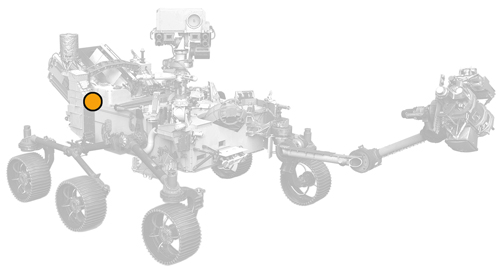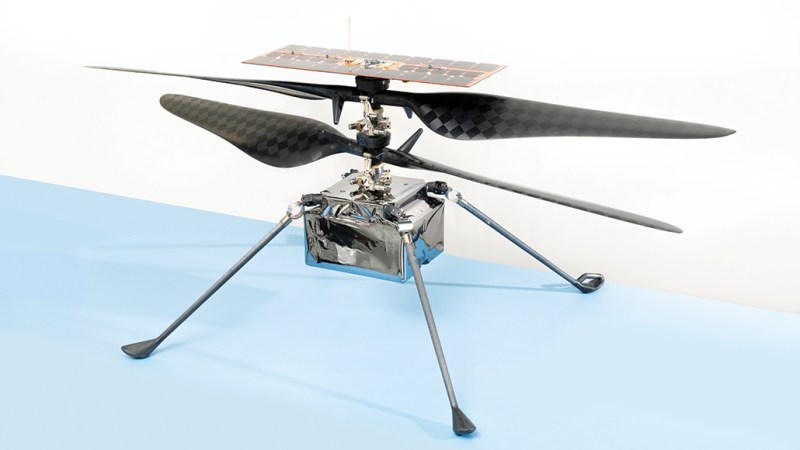NASA’s Perseverance rover will seek signs of past life on Mars
A plethora of instruments will collect rocks and study the weather on the Red Planet

Perseverance is full of technology to track the weather, collect samples and more.
JPL-CALTECH/NASA
- More than 2 years ago
NASA’s next rover is a connoisseur of Martian rocks. The main job of the Perseverance rover, set to launch between July 20 and August 11, is to pick out rocks that might preserve signs of past life and store the samples for a future mission back to Earth.
“We’re giving a gift to the future,” says planetary scientist Adrian Brown, who works at NASA Headquarters in Washington, D.C.
Most of the rover’s seven sets of scientific instruments work in service of that goal, including zoomable cameras to pick out the best rocks from afar and lasers and spectrometers to identify a rock’s makeup. After the rover lands in February 2021, it’s capable of collecting and storing 20 samples within the first Martian year (about two Earth years). The NASA team plans to collect at least 30 samples over the whole mission, says planetary scientist Katie Stack Morgan of NASA’s Jet Propulsion Laboratory in Pasadena, Calif.
Fortunately, Perseverance is headed to a spot that should be full of collection-worthy rocks. The landing site in Jezero crater, just north of the Martian equator, contains an ancient river delta that looks like it once carried water and silt into a long-lived lake.
“We can already predict which parts of that delta might give us the highest return for possible biosignatures,” Stack Morgan says. The crater has a “bathtub ring” of carbonates, minerals that settle in shallow, warm waters that are especially good at preserving signs of life. “That makes Jezero special,” she says.
But Perseverance is more than a rock collector. The rover will probe the ground beneath its wheels, fly a helicopter, track the weather and test tech for turning Martian air into rocket fuel. Every part of the rover has a job to do.

RIMFAX
RIMFAX, or Radar Imager for Mars’ Subsurface Experiment, will use radio waves to probe the ground under the rover’s wheels. The instrument will take a measurement every 10 centimeters along the rover’s track and should be able to sense 10 meters deep, depending on what’s down there. The InSight lander, currently on Mars, has a seismometer that listens for Marsquakes, but a ground-penetrating radar to understand the Martian interior is a first.

MOXIE
Human explorers will need oxygen on Mars, but not just for breathing, says former astronaut Jeffrey Hoffman. “It’s for the rocket,” says Hoffman, now an engineer at MIT. To take off from the Martian surface and return home, astronauts will need liquid oxygen rocket fuel. Bringing all that fuel from Earth is not an option.
To demonstrate how to make fuel from scratch, MOXIE, or Mars Oxygen In-Situ Resource Utilization Experiment, will pull carbon dioxide out of the Martian atmosphere and convert it to oxygen. MOXIE will produce about 10 grams of oxygen per hour, which is only about 0.5 percent of what’s needed to make enough fuel for a human mission over the 26 months between launch windows. But the effort will teach engineers on Earth how to scale up the technology.

Mastcam-Z
Set atop Perseverance’s neck, Mastcam-Z, the rover’s main set of eyes, can swivel 360 degrees laterally and 180 degrees up and down to view the surrounding landscape. Like its predecessor on the Curiosity rover, the camera will take color, 3-D and panoramic images to help scientists understand the terrain and the mineralogy of the surrounding rocks. Mastcam-Z can also zoom in on distant features — a first for a Mars rover.

SuperCam
How can Perseverance look for signs of ancient microbes in rocks too far away to touch? Enter SuperCam, a laser spectrometer mounted on the rover’s head. SuperCam will shoot rocks with a laser from more than seven meters away, vaporizing a tiny bit of the minerals. Researchers will then analyze the vapor to help figure out what the rocks are made of, without having to drive the rover down steep slopes or up rugged crags. The laser will also measure properties of the Martian atmosphere and dust to refine weather models.

MEDA
MEDA, or Mars Environmental Dynamics Analyzer, is the rover’s weather station. Six instruments distributed across the neck, body and interior will measure air temperature, air pressure, humidity, radiation and wind speed and direction. The tools will also analyze the physical characteristics of the all-important Mars dust. Scientists hope to use the information from these sensors to better predict Mars weather.

PIXL, SHERLOC and WATSON
Geologists never go into the field without a hand lens. Likewise, Perseverance will be prepared with three arm-mounted magnifying instruments. PIXL, the Planetary Instrument for X-ray Lithochemistry, will have a camera that can resolve grains of Martian rock and dirt to scales smaller than a millimeter. It will also detect the chemical makeup of those rocks by zapping them with X-rays and measuring the wavelength of light the rocks emit in response. SHERLOC, or Scanning Habitable Environments with Raman and Luminescence for Organics and Chemicals, will take similar measurements using an ultraviolet laser. WATSON, the Wide Angle Topographic Sensor for Operations and Engineering, will take pictures with a resolution of 30 micrometers to put the chemistry in context. The instruments will seek signs of ancient microbes preserved in Martian rocks and soil, and help scientists decide which rocks to store for a future mission to return to Earth.
Ingenuity

Perseverance will also carry a stowaway folded up origami-style in a protective shield the size of a pizza box: a helicopter called Ingenuity. At a smooth, flat spot, Ingenuity will drop to the ground and unfold, then take about five flights in 30 Martian days. These flights are mainly to show that the copter can get enough lift in the thin Martian atmosphere. If Ingenuity is successful, future helicopters might help run reconnaissance for rovers. “There’s always a question with the rover, what’s over that cliff? What’s over that rise?” says planetary scientist Briony Horgan of Purdue University in West Lafayette, Ind. “If you have a helicopter, you can see those things ahead of time.”

Trustworthy journalism comes at a price.
Scientists and journalists share a core belief in questioning, observing and verifying to reach the truth. Science News reports on crucial research and discovery across science disciplines. We need your financial support to make it happen – every contribution makes a difference.







